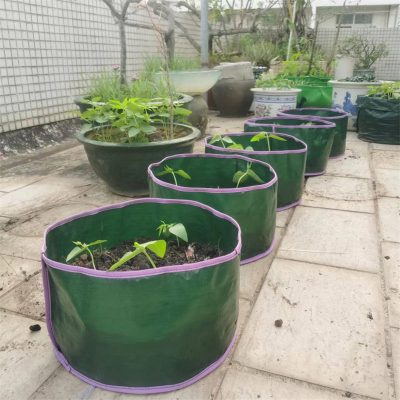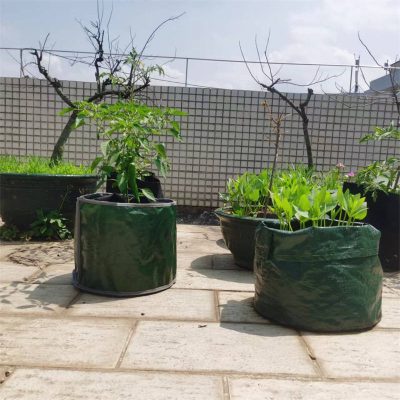To ensure successful planting in woven plastic grow bags, here are some tips and techniques to follow:
- Choose the Right Size: Select grow bags that are appropriate for the size and type of plants you want to grow. Consider the mature size of the plants and their root development. Smaller plants may thrive in smaller bags, while larger plants or those with extensive root systems may require larger bags.
- Prepare the Grow Bags: Before planting, ensure that the grow bags are clean and free from any debris. Rinse them with water and allow them to dry. Check for any drainage holes at the bottom of the bags or create them yourself if needed.
- Use High-Quality Potting Mix: Fill the grow bags with a high-quality potting mix specifically formulated for container gardening. Avoid using garden soil, as it may be too heavy and not provide adequate drainage. A well-draining mix enriched with organic matter will promote healthy root growth.
- Moisten the Potting Mix: Before planting, moisten the potting mix in the grow bags. This helps settle the soil and ensures adequate hydration for the plants once they are planted.
- Planting Technique: Make a small hole in the potting mix that is deep enough to accommodate the roots of the plant. Gently place the plant into the hole, ensuring the roots are spread out and not crowded. Fill the hole with soil and lightly press it down to secure the plant.
- Proper Spacing: Consider the recommended spacing guidelines for the specific plants you are growing. Ensure that there is enough space between each plant to allow for proper growth and airflow.
- Watering: After planting, thoroughly water the plants to help establish their roots. Monitor the moisture levels in the grow bags and water as needed, ensuring the soil remains evenly moist but not waterlogged. Adjust the frequency and amount of watering based on the specific water requirements of the plants.
- Sunlight Exposure: Place the grow bags in a location that receives adequate sunlight for the specific plants you are growing. Most plants require at least 6 hours of direct sunlight per day. Adjust the positioning of the bags if needed to optimize sunlight exposure.
- Fertilization: As the plants grow, they will require nutrients for healthy development. Consider using organic fertilizers or slow-release fertilizers specifically formulated for container plants. Follow the recommended application rates and frequency to provide a balanced nutrient supply.
- Regular Monitoring and Maintenance: Regularly monitor the plants in the grow bags for signs of growth, pests, or diseases. Prune or trim the plants as necessary to maintain their shape and encourage healthy growth. Remove any dead or diseased foliage promptly.
- Crop Rotation: If you are growing vegetables or herbs in the grow bags, practice crop rotation to minimize the risk of diseases and nutrient depletion. Rotate the types of plants grown in the bags each season to maintain soil health.
- Seasonal Considerations: Adjust your planting and care practices based on the seasons. Plants may have different water and sunlight requirements during different times of the year. Stay informed about the specific needs of the plants you are growing and make adjustments accordingly.
By following these tips and techniques, you can maximize the success of planting in woven plastic grow bags and create an optimal growing environment for your plants.








